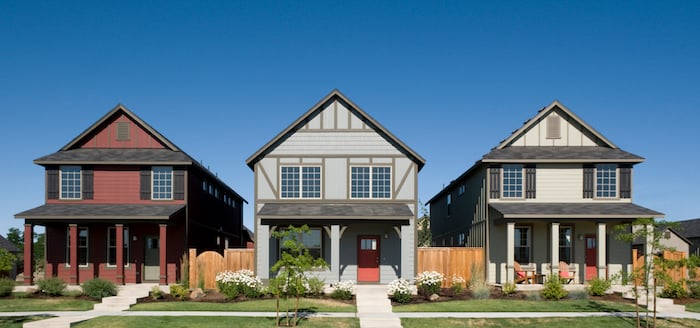Home shoppers around the country are frustrated.
There aren’t enough homes for sale that meet their needs, and those that are available are often the subject of high price bidding wars.
It’s no wonder that so many homeowners – Baby Boomers in particular — are finding it more sensible to stay in their current home and improve it.
But most homeowners aren’t just taking on small improvements, they’re taking on big remodeling jobs that lead to lifestyle upgrades – redoing entire kitchens and bathrooms, building decks, porches and garages, or even an entire addition.
And according to the 2017 True Cost Report, homeowners are only planning for more: nearly two-thirds of homeowners plan to spend the same amount or more on home improvement projects this year, than they did in 2016.
These four articles will get you up to speed on the trends that are keeping housing inventory at such astonishingly low levels, and why remodeling may be just as good – or better – than moving into a new place.
- America’s Housing Inventory Problem, Explained in Four Charts – Bloomberg
“…[S]uch a lean supply over a similar time frame has never been recorded in about two decades of data,” Bloomberg wrote earlier this year.”
Between low rates of homebuilding and less conviction among homeowners that it’s a good time to sell, Bloomberg illustrates four issues (plus, one from yours truly) that have the most powerful impact on the nation’s housing inventory shortage.
Here’s a quick recap of those:
- Equity hasn’t increased in all neighborhoods yet. There are still significant numbers of homeowners underwater in certain areas
- In the last year, four million homes shifted from being owner-occupied to being in the rental supply
- Homeowners – particularly Baby Boomers — move less frequently as a society than in years past. Older homeowners especially are more prone to stay put and remodel their current home
- The process of selling one home and then finding and buying another can be incredibly daunting (low inventory leads to even lower inventory)
- Builders need to build more in order to keep up with demand for new homes, especially affordable ones
- An Inventory Quandary: Three Theories for Why People are Moving Less – Zillow
“In the late 1980s,” Zillow writes, “More than one in six American adults moved each year; by 2016, only about one in 10 had moved over the previous year.”
The most significant factor in this? The shortfall of new construction. New home demand runs at about 1.5 million homes a year, but only 1.2 million housing units (not including mobile homes) are being built. This leads to both a runup in home prices, and a boom in homeowner spending on remodeling and improvement.
- Americans Pour Record Sums Into Home Improvement – Wall Street Journal
“Many Americans are electing to stay put rather than trade up because the inventory of affordable homes is so small.”
This Wall Street Journal piece not only discusses the shortage, it also delves into what homeowners are doing because of it (spoiler alert: many are staying put and spending their dollars on remodeling).
For instance, if one is “tired of the house” or doesn’t have enough storage, that homeowner is more likely to add new paint, flooring and appliances, expand closets or build an addition instead of moving.
- Raising the Roof on Home Renovation – NPR’s On Point
“What I can afford to buy really isn’t that exciting, so I’d rather stay put and add on to my existing home, knock out that wall, put in that new kitchen.”
The NPR podcast, hosted by Tom Ashbrook, discusses with homeowners and experts the problems raised by the housing inventory shortage, by high home prices, and what this means for remodelers.
Much of the conversation surrounds home shoppers feeling frustrated by a gravely low level of inventory – or less choice at higher prices — resulting in bidding wars in the hottest metro areas.
It’s no wonder so many homeowners are deciding to stay put and transform their current house into one that feels fresh, rather than sell and start from scratch.
*Source: The Harvard Joint Center for Housing Studies

 Raise the Value of Your Home with These 7 Remodeling Tips
Raise the Value of Your Home with These 7 Remodeling Tips  Engineering the Future: The Educator’s Guide to Building and Construction
Engineering the Future: The Educator’s Guide to Building and Construction  How to Recoup Remodeling & Addition Investments
How to Recoup Remodeling & Addition Investments  Report from PCBC: New Home Construction
Report from PCBC: New Home Construction  HomeAdvisor Trend Watch: Major Basement Remodels on the Rise
HomeAdvisor Trend Watch: Major Basement Remodels on the Rise 

Are You Familiar With This Topic? Share Your Experience.